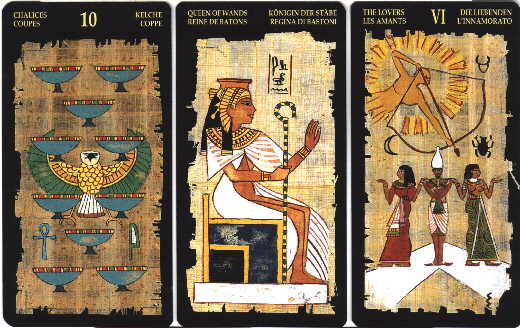Your Legal Resource
History Of Egyptian Tarot
A Brief History:
The Egyptian association was begun during the 1780s by a Frenchman called Antoine Court de Gebelin. He accepted he saw Egyptian lessons probable and related them to the Egyptian god Thoth, who gave humanity composing. De Gebelin motivated a large number of others to investigate his thoughts, including the popular/scandalous Aleister Crowley�
Court de Gebelin impacted various late nineteenth century mediums in France and England who considered tarot to be a book of insider facts. A portion of these were individuals from the Hermetic Order of the Golden Dawn (GD), four of whom left us extraordinary present-day decks still widely used today:�
A. E. Waite and Pamela Colman Smith made the Rider Waite Tarot, which is currently otherwise called Rider Waite Smith to recognize the artist. The deck was distributed in 1910 and the 'Rider' some portion of its title alludes to the first distributer. Many decks have been founded on the 'RWS', and it is most likely the best one with which to begin investigating tarot. It was the first since the fifteenth century Sola Busca deck to show pictures on the Minor Arcana. The Tarot Basics representations show this deck.�
Aleister Crowley asked another GD part, Lady Frieda Harris, to paint The Thoth Tarot, chipping away at it somewhere in the range of 1938 and 1943, however, it was not distributed until 1969. This deck keeps to the more seasoned custom of pips/suit designs, instead of scenes, on the numbered cards of the suits. These Minor Arcana cards, however, are still exceptionally delightful, with fabulous plans. The Thoth deck has gotten a tremendously persuasive one inside elusive circles.
Review:
This is one of the more appealing Egyptian-styled decks right now that is available. The cards are somewhat more modest than normal. The pictures are drawn on what resembles matured papyrus. Corners are frayed or spoiled away and the paint of the actual pictures is disappeared in spots. The papyrus is set on a dark foundation, which differentiates pleasantly. There is no different boundary. The card number is focused on the highest point of the card with the suit name (Minor Arcana) or card name (court cards and Major Arcana) on one or the other side of the number - English and French to one side, German and Italian to one side.�
The Major Arcana have the customary names except for the Pope (Hierophant) and the Stars (Star), Justice is VIII and Strength is XI. The Major Arcana symbolism draws vigorously from Waite, yet with a couple of gestures to the Egyptian pantheon like Death and the Devil. The workmanship is pleasantly done. I'm not an aficionado of the level, hardened style of old Egyptian craftsmanship, yet the profound tones utilized make this deck more tasteful to me. The workmanship is acceptable. The backs have hieroglyphics.�
The suits are Cups, Wands, Swords, and pentacles. The court comprises of Knave, Knight, Queen, and King. The Minor Arcana are pips that are adorned with Egyptian imagery. I don't think enough about Egyptian imagery to decide if the images picked are valuable in understanding the card, however, I would conjecture that the images are brightening, bad habit significant. The format and utilization of imagery are all around done, making these pips satisfying to the eye.�
I suggest this deck for enthusiasts and for individuals who are searching for an Egyptian-style deck. This deck is beautifully crafted and as stated earlier, one of the more attractive decks in this style.
Name: Egyptian Tarot (I Tarocchi Egiziani)
Cards: 78
Major Arcana: 22
Minor Arcana: 56
Card Dimensions: 2.60 x 4.72 in
Included: 64-page Booklet (Full deck has 160-page booklet)
Publisher: Lo Scarabeo (2000)
More information on tarot: http://www.thepasteboardmasquerade.com/
